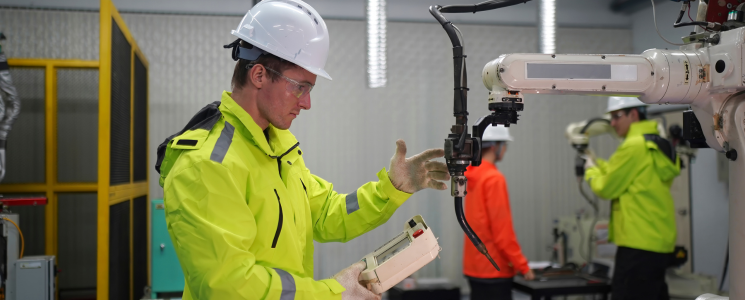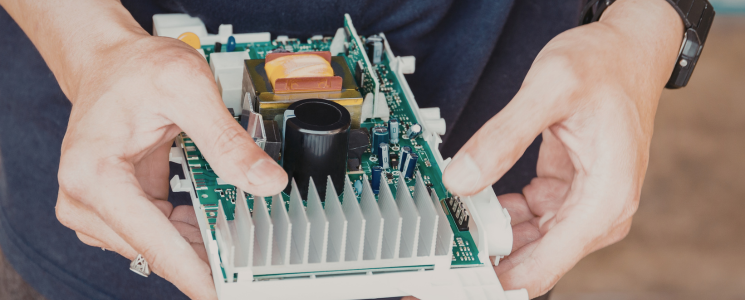In today’s era of digital transformation, industries are rapidly embracing process automation to enhance accuracy, efficiency, and productivity. Among the many instruments that have benefited from this technological shift, the Mass Flow Controller (MFC) stands out as a key enabler of precision fluid control in automated systems. As manufacturing and process industries evolve toward smart operations, the integration of automation technologies is revolutionizing how MFCs operate, communicate, and contribute to process performance.
This article explores how process automation is reshaping the Mass Flow Controller industry, examining the technological advancements, benefits, and future trends that are driving innovation and performance improvement across industrial sectors.
Understanding the Role of a Mass Flow Controller
A Mass Flow Controller is a precision instrument designed to measure and control the flow rate of gases or liquids in a process system. Unlike traditional flow meters that measure volumetric flow, MFCs provide a direct measurement of mass flow, ensuring accurate and stable control regardless of changes in temperature or pressure.
These devices are widely used in semiconductor manufacturing, chemical processing, biotechnology, pharmaceuticals, and environmental applications where precise flow control is essential. The core function of a Mass Flow Controller is to maintain a constant flow rate as defined by a setpoint signal, adjusting valve positions through electronic feedback mechanisms to achieve optimal performance.
With the rise of automation, MFCs have evolved from standalone analog devices into intelligent components integrated into digital process control systems.
The Shift from Manual Control to Process Automation
Historically, flow control in industrial systems was largely manual or semi-automated. Operators would rely on analog controllers and visual indicators to monitor and adjust flow rates. While effective to some extent, these systems lacked the responsiveness and precision required in today’s high-performance environments.
Process automation introduced a paradigm shift. By connecting MFCs to programmable logic controllers (PLCs), distributed control systems (DCS), or supervisory control and data acquisition (SCADA) platforms, industries gained the ability to automate flow management, data monitoring, and system optimization in real time.
Automation enables dynamic adjustments based on process feedback, eliminating the need for human intervention and significantly improving system stability and repeatability.
How Process Automation Enhances Mass Flow Controller Performance
The integration of automation technologies has brought a series of transformative benefits to the Mass Flow Controller industry. Let’s explore the most significant ones:
1. Improved Accuracy and Response Time
Automation enables precise synchronization between MFCs and control systems. Digital communication protocols enable faster data transmission and shorter feedback loops, resulting in near-instantaneous responses to process changes.
Advanced algorithms in automated control systems analyze flow data and adjust MFC valve positions with exceptional accuracy, reducing fluctuations and ensuring consistent flow delivery. This improvement is particularly valuable in semiconductor and biotechnology applications where even slight variations can affect product quality.
2. Remote Monitoring and Control
Modern MFCs equipped with automation-compatible interfaces can be remotely accessed and managed through centralized control systems. Engineers can view real-time flow rates, monitor performance metrics, and adjust setpoints remotely, eliminating the need for physical presence near the device.
This capability enhances operational flexibility and minimizes downtime. Remote monitoring also supports predictive maintenance by alerting operators to potential malfunctions or deviations before they cause process disruptions.
3. Integration with Smart Manufacturing Systems
The advent of Industry 4.0 and the Industrial Internet of Things (IIoT) has transformed MFCs into intelligent networked devices. Many new-generation Mass Flow Controllers come equipped with digital communication interfaces such as EtherCAT, Profibus, or Modbus TCP, enabling seamless integration into smart factory networks.
Through this connectivity, MFCs can exchange data with sensors, controllers, and cloud-based platforms, enabling advanced analytics and real-time decision-making. Such integration allows process engineers to optimize flow control based on data-driven insights, improving both efficiency and product yield.
4. Data Logging and Predictive Analytics
Automation allows MFCs to record extensive operational data, including flow rates, temperature, pressure, and control signals. When analyzed, this data provides valuable insights into system performance trends and potential anomalies.
Predictive analytics tools can utilize this data to forecast maintenance needs, identify inefficiencies, and optimize process parameters. This predictive capability helps industries transition from reactive maintenance strategies to proactive ones, reducing unplanned downtime and extending equipment life.
5. Enhanced Process Safety and Compliance
Automation significantly enhances process safety by providing continuous monitoring and automated shutdowns in case of irregularities. Automated interlock systems can respond immediately to deviations in flow, preventing equipment damage and ensuring worker safety.
Additionally, the precise control provided by automated MFC systems supports regulatory compliance in industries that must meet strict environmental or safety standards.
Technological Advancements Driving Automation in Mass Flow Controllers
Several emerging technologies are accelerating automation adoption within the Mass Flow Controller industry. Each innovation contributes to smarter, faster, and more reliable control systems.
1. Digital Communication Protocols
Traditional analog signals are being replaced by digital communication methods that offer higher accuracy, faster response, and richer data exchange. Protocols such as EtherCAT, DeviceNet, and Profibus allow MFCs to transmit real-time diagnostic and operational information to centralized control units.
This digital communication capability also simplifies system setup and calibration, reducing manual effort and improving scalability.
2. Embedded Microcontrollers and Smart Sensors
Modern MFCs are equipped with embedded microcontrollers that process flow signals internally and execute control algorithms autonomously. These onboard processors enable real-time adjustments, self-calibration, and error detection.
Smart sensors further improve performance by continuously monitoring environmental conditions and compensating for variations in temperature and pressure. Together, these technologies ensure that the MFC maintains optimal accuracy even under dynamic process conditions.
3. Artificial Intelligence and Machine Learning
The incorporation of AI and machine learning algorithms into process automation systems is opening new possibilities for MFC performance optimization. AI-powered controllers can learn from historical process data to predict flow behavior and make intelligent adjustments in real time.
Machine learning models can also identify patterns that indicate wear, leakage, or contamination, allowing maintenance teams to act before problems escalate. This level of automation not only enhances efficiency but also ensures consistent product quality.
4. Cloud-Based Monitoring and Control
Cloud computing has become a cornerstone of industrial automation. By connecting MFCs to cloud-based monitoring systems, companies can access process data from anywhere, at any time.
Cloud connectivity allows multiple facilities to centralize data management, improving coordination and standardization across global operations. It also supports advanced analytics, dashboards, and performance visualization, giving decision-makers greater control over flow processes.
5. Miniaturization and Modular Design
As industries demand more compact and flexible systems, MFC manufacturers are developing modular and miniaturized designs that integrate seamlessly into automated setups.
Modular MFCs allow for easier scalability, faster replacement, and simplified integration into existing process lines. These innovations enable manufacturers to design customized flow control solutions that adapt to specific automation requirements.
Industry Applications: Automation-Driven Mass Flow Controller Solutions
Automation is redefining how MFCs are used across multiple industries. Below are some key application areas where process automation is delivering measurable impact:
Semiconductor Manufacturing
In semiconductor fabrication, precise gas flow control is essential for processes such as chemical vapor deposition, etching, and wafer cleaning. Automated MFCs maintain accurate gas mixtures, ensuring uniform film thickness and defect-free surfaces.
Through integration with automated process control systems, semiconductor plants achieve higher yields, reduced waste, and improved repeatability.
Biotechnology and Pharmaceuticals
Pharmaceutical production and bioprocessing rely heavily on controlled fluid and gas delivery. Automated MFC systems ensure consistent conditions for fermentation, cell culture, and synthesis processes.
Automation minimizes human error and contamination risk while maintaining strict control over critical parameters such as oxygen and carbon dioxide flow rates.
Chemical and Petrochemical Processing
Automation in chemical industries has transformed batch and continuous processing operations. MFCs play a vital role in controlling reactant flows, maintaining stoichiometric balance, and ensuring product consistency. By integrating automated MFCs with process control systems, operators can monitor flow parameters, adjust reaction rates, and enhance overall plant safety and productivity.
Environmental Monitoring and Research
Environmental testing laboratories use MFCs for gas analysis, air quality monitoring, and calibration of analytical instruments. Automation simplifies multi-gas switching, precise dosing, and continuous monitoring, allowing for faster and more reliable results.
Food and Beverage Industry
Automated MFCs are used to control carbonation, flavor dosing, and modified atmosphere packaging. These systems help maintain product uniformity, reduce waste, and meet stringent hygiene and quality standards.
Benefits of Automation for the Mass Flow Controller Industry
The growing adoption of automation has brought a wide range of benefits to the Mass Flow Controller industry and its users.
1. Higher Operational Efficiency – Automated control minimizes manual intervention, reducing operational costs and human error.
2. Enhanced Product Quality – Precise flow control ensures repeatable and consistent production outcomes.
3. Lower Maintenance Costs – Predictive analytics and remote monitoring reduce unplanned maintenance and equipment failures.
4. Scalability – Modular automation architectures allow easy system expansion as production demands grow
5. Energy Optimization – Automation can dynamically adjust flow to minimize energy waste and improve sustainability.
Challenges and Considerations in Automation Adoption
While the benefits of automation are significant, implementation requires careful planning and investment. Some key challenges include:
-
Integration Complexity: Connecting MFCs to existing legacy systems can be difficult without proper interface compatibility.
-
Initial Costs: Upgrading to fully automated systems involves investment in equipment, software, and training.
-
Cybersecurity Risks: As MFCs become network-connected, ensuring secure data communication becomes critical.
-
Skill Gaps: Operators and engineers must be trained to manage and troubleshoot automated systems effectively.
Addressing these challenges involves adopting open communication standards, prioritizing cybersecurity, and building workforce competencies in automation technologies.
The Future of Process Automation in Mass Flow Controllers
The future of the Mass Flow Controller industry is closely tied to ongoing advancements in digitalization and smart manufacturing. Emerging technologies such as edge computing, digital twins, and 5G connectivity are set to enhance automation even further.
-
Edge Computing: Processing data closer to the source will reduce latency and improve real-time control accuracy.
-
Digital Twins: Virtual replicas of MFC systems will allow predictive simulation, performance optimization, and remote troubleshooting.
-
5G Networks: High-speed wireless communication will enhance connectivity and data exchange among MFCs and automation platforms.
In the coming years, MFCs will continue to evolve into self-optimizing, intelligent instruments that communicate autonomously and contribute to fully integrated digital ecosystems.







